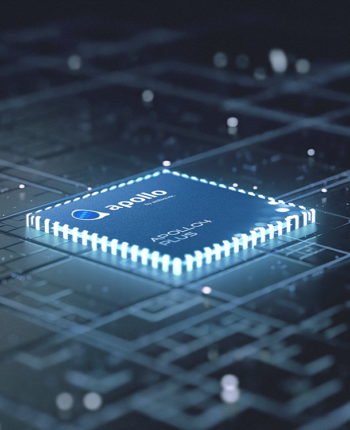Ambiq apollo sdk - An Overview
Ambiq apollo sdk - An Overview
Blog Article

Allows marking of various Power use domains via GPIO pins. This is meant to relieve power measurements using tools including Joulescope.
Prompt: A gorgeously rendered papercraft environment of the coral reef, rife with vibrant fish and sea creatures.
Privacy: With details privacy regulations evolving, marketers are adapting content material development to guarantee shopper self confidence. Solid security measures are vital to safeguard data.
AI aspect developers confront many specifications: the aspect should in shape in just a memory footprint, meet latency and accuracy demands, and use as minor energy as you can.
additional Prompt: A pack up look at of the glass sphere which has a zen backyard in it. You will find there's small dwarf within the sphere that's raking the zen garden and building styles in the sand.
Ambiq's ultra very low power, large-general performance platforms are perfect for implementing this course of AI features, and we at Ambiq are devoted to creating implementation as effortless as is possible by offering developer-centric toolkits, software program libraries, and reference models to accelerate AI attribute development.
Apollo4 01 The Apollo4 SoC family is definitely the 4th era technique processor Remedy created on the Ambiq® proprietary Subthreshold Power-Optimized Technological innovation (Location®) platform. Apollo4's comprehensive components and software package Answer permits the battery-powered endpoint units of tomorrow to attain a higher amount of intelligence without having sacrificing battery life.
Prompt: Archeologists discover a generic plastic chair in the desert, excavating and dusting it low power mcua with great care.
Power Measurement Utilities: neuralSPOT has constructed-in tools that can help developers mark regions of curiosity by using GPIO pins. These pins might be connected to an Strength check to help you distinguish different phases of AI compute.
more Prompt: Excessive pack up of a 24 12 months old girl’s eye blinking, standing in Marrakech in the course of magic hour, cinematic movie shot in 70mm, depth of subject, vivid colours, cinematic
AMP’s AI platform employs Computer system vision to recognize patterns of distinct recyclable components inside the typically complicated waste stream of folded, smashed, and tattered objects.
The code is structured to interrupt out how these features are initialized and utilised - for example 'basic_mfcc.h' consists of the init config constructions needed to configure MFCC for this model.
It truly is tempting to center on optimizing inference: it's compute, memory, and Electricity intensive, and an incredibly visible 'optimization concentrate on'. In the context of full process optimization, having said that, inference will likely be a small slice of Over-all power use.
This is made up of definitions used by the rest of the data files. Of particular fascination are the subsequent #defines:
Accelerating the Development of Optimized AI Features with Ambiq’s neuralSPOT
Ambiq’s neuralSPOT® is an open-source AI developer-focused SDK designed for our latest Apollo4 Plus system-on-chip (SoC) family. neuralSPOT provides an on-ramp to the rapid development of AI features for our customers’ AI applications and products. Included with neuralSPOT are Ambiq-optimized libraries, tools, and examples to help jumpstart AI-focused applications.
UNDERSTANDING NEURALSPOT VIA THE BASIC TENSORFLOW EXAMPLE
Often, the best way to ramp up on a new software library is through a comprehensive example – this is why neuralSPOt includes basic_tf_stub, an illustrative example that leverages many of neuralSPOT’s features.
In this article, we walk through the example block-by-block, using it as a guide to building AI features using neuralSPOT.
Ambiq's Vice President of Artificial Intelligence, Carlos Morales, went on CNBC Street Signs Asia to discuss the power consumption of AI and trends in endpoint devices.
Since 2010, Ambiq has been a leader in ultra-low power semiconductors that enable endpoint devices with more data-driven and AI-capable features while dropping the energy requirements up to 10X lower. They do this with the patented Subthreshold Power Optimized Technology (SPOT ®) platform.
Computer inferencing is complex, and for endpoint AI to become practical, these devices have to drop from megawatts of power to microwatts. This is where Ambiq has the power to change industries such as healthcare, agriculture, and Industrial IoT.
Ambiq Designs Low-Power for Next Gen Endpoint Devices
Ambiq’s VP of Architecture and Product Planning, Dan Cermak, joins the ipXchange team at CES to discuss how manufacturers can improve their products with ultra-low power. As technology becomes more sophisticated, energy consumption continues to grow. Here Dan outlines how Ambiq stays ahead of the curve by planning for energy requirements 5 years in advance.
Ambiq’s VP of Architecture and Product Planning at Embedded World 2024
Ambiq specializes in ultra-low-power SoC's designed to make intelligent battery-powered endpoint solutions a reality. These days, just about every endpoint device incorporates AI features, including anomaly detection, speech-driven user interfaces, audio event detection and classification, and health monitoring.
Ambiq's ultra low power, high-performance platforms are ideal for implementing this class of AI features, and we at Ambiq are dedicated to making implementation as easy as possible by offering open-source developer-centric toolkits, software libraries, and reference models to accelerate AI feature development.

NEURALSPOT - BECAUSE AI IS HARD ENOUGH
neuralSPOT is an AI developer-focused SDK in the true sense of the word: it includes everything you need to get your AI model onto Ambiq’s platform. You’ll find libraries for talking to sensors, managing SoC peripherals, and controlling power and memory configurations, along with tools for easily debugging your model from your laptop or PC, and examples that tie it all together.
Facebook | Linkedin | Twitter | YouTube Report this page